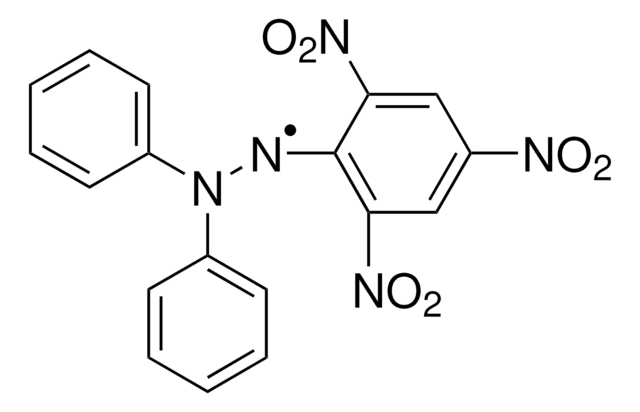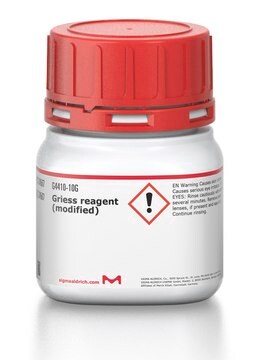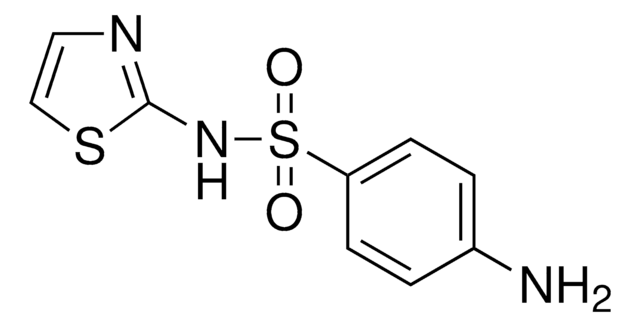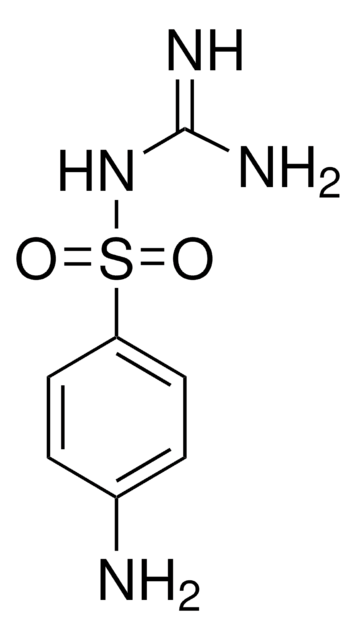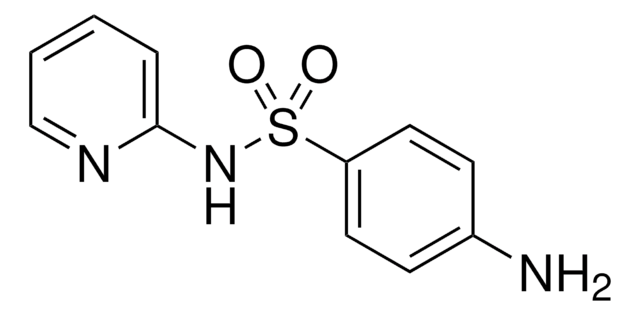S8627
Sulfacetamide
≥98.0%
Synonyme(s) :
N-(4-aminobenzènesulfonyl)acétamide
About This Item
Produits recommandés
Essai
≥98.0%
Spectre d'activité de l'antibiotique
Gram-negative bacteria
Gram-positive bacteria
mycoplasma
Mode d’action
DNA synthesis | interferes
Chaîne SMILES
CC(=O)NS(=O)(=O)c1ccc(N)cc1
InChI
1S/C8H10N2O3S/c1-6(11)10-14(12,13)8-4-2-7(9)3-5-8/h2-5H,9H2,1H3,(H,10,11)
Clé InChI
SKIVFJLNDNKQPD-UHFFFAOYSA-N
Vous recherchez des produits similaires ? Visite Guide de comparaison des produits
Description générale
Application
Actions biochimiques/physiologiques
Conditionnement
Autres remarques
Mention d'avertissement
Warning
Mentions de danger
Conseils de prudence
Classification des risques
Skin Sens. 1 - STOT SE 3
Organes cibles
Respiratory system
Code de la classe de stockage
11 - Combustible Solids
Classe de danger pour l'eau (WGK)
WGK 2
Équipement de protection individuelle
Eyeshields, Gloves, type N95 (US)
Faites votre choix parmi les versions les plus récentes :
Déjà en possession de ce produit ?
Retrouvez la documentation relative aux produits que vous avez récemment achetés dans la Bibliothèque de documents.
Notre équipe de scientifiques dispose d'une expérience dans tous les secteurs de la recherche, notamment en sciences de la vie, science des matériaux, synthèse chimique, chromatographie, analyse et dans de nombreux autres domaines..
Contacter notre Service technique



